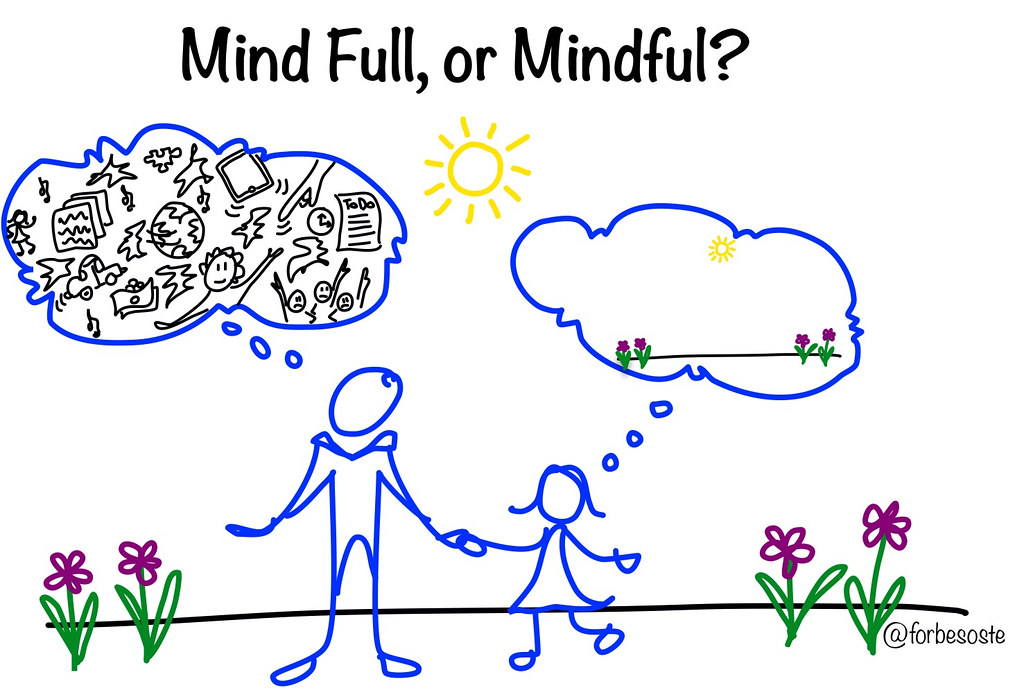



https://healthyforgood.heart.org/be-well/infographics/mindful-eating-infographic

For on-line food games for children check:

It’s the latest craze. Where you might expect to see children, you find adults: They sit with colored pencils in their hands, bent over the swirls and intricate patterns of coloring books. Yes, coloring books. They are losing themselves in patterns of mandalas, curved flowers and runaway stems. This is a world they create and escape into, and it’s become a popular form of relaxation.
But how does it work? What does this pastime do to our brains to elicit such pleasure and calm?
According to clinical psychologist Scott M. Bea, Psy.D., it has everything to do with refocusing our attention. “Adult coloring requires modest attention focused outside of self-awareness. It is a simple activity that takes us outside ourselves. In the same way, cutting the lawn, knitting, or taking a Sunday drive can all be relaxing.”
Dr. Bea cites three reasons adult coloring can be calming:
https://health.clevelandclinic.org/2015/11/3-reasons-adult-coloring-can-actually-relax-brain/
By going to the website: https://www.healthyeating.org/Healthy-Eating/Healthy-Eating-Tools/Food-Personality-Quiz you can take a Food Personality Quiz to determine your meal preparation style helping you plan more effectively to save time and give you more pleasure in meal prep.

Seasonal affective disorder (SAD) is a type of depression that’s related to changes in seasons — SAD begins and ends at about the same times every year. If you’re like most people with SAD, your symptoms start in the fall and continue into the winter months, sapping your energy and making you feel moody. Less often, SAD causes depression in the spring or early summer.

Don’t brush off that yearly feeling as simply a case of the “winter blues” or a seasonal funk that you have to tough out on your own. Take steps to keep your mood and motivation steady throughout the year.
For more information check the link below:
If you are looking for a free support group for workouts, you may find what you’re looking for in something called “The November Project”. Here in Indianapolis is a group of folks who get together regularly once a week in the early morning on Wednesdays. Complimentary hugs, high-5’s and other forms of encouragement are accompanied by climbs and routines done at the the Veteran’s Memorial Plaza. For more information:

For the most current cervical cancer screening guidelines made simple visit:
http://www.nccc-online.org/hpvcervical-cancer/cervical-cancer-screening/

We thank the Butler University Health and Recreation staff for this contribution to the Healthy Horizons blog posts!
January and the New Year means a fresh new start for many. Have you been thinking about exercising again but feel the variety of workouts and information out there is overwhelming? Well, good news! We’ve created an easy to follow physical activity calendar for the month of January. Making small, manageable changes each day is a great way to get back into your grove. Are you ready to take the January physical activity challenge? If so, download the calendar below.
HRC Spring Group Fitness Schedule: https://www.butler.edu/fitness/group-fitness-classes
Be sure to click on the links provided in the calendar for workouts.
Workout examples and resources:
Cardio: brisk walking, jogging, running, cycling, dancing, jump roping
Legs: squats, leg raises, wall sits, kick backs. Find examples here: https://www.acefitness.org/education-and-resources/lifestyle/exercise-library/body-part/legs-thighs
See how mindfulness helps you live in the moment.

By Mayo Clinic Staff
If you’ve heard of or read about mindfulness — a form of meditation — you might be curious about how to practice it. Find out how to do mindfulness exercises and how they might benefit you.
Mindfulness is the act of being intensely aware of what you’re sensing and feeling at every moment — without interpretation or judgment.
Spending too much time planning, problem-solving, daydreaming, or thinking negative or random thoughts can be draining. It can also make you more likely to experience stress, anxiety and symptoms of depression. Practicing mindfulness exercises, on the other hand, can help you direct your attention away from this kind of thinking and engage with the world around you.
There are many ways to practice mindfulness. For example: